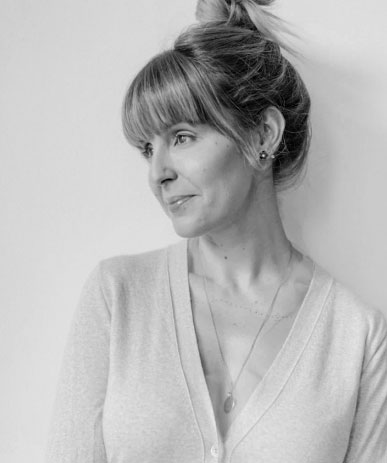Études de cas
Justice réparatrice
* For image references, please scroll to the bottom of the page.
Author of case study: Marcela Torres Molano
Geopolitical location of space:
20 Lichfield Street
Christchurch Central City
Extant? Yes
Architect:
Cox Architecture, Opus Architekten, Warren and Mahoney
Construction completed in 2017.
The building and its surrounding facilities serve mostly the traditonal justice system of New Zealand. However, its design was created in collaboration with Ngäi Tüähuriri and was based on Māori cultural references (in honour of the 1998 Ngäi Tahu land settlement claim). As such, the architectural project can be seen in a larger framework of national reconciliation processes.
Yes, there are 19 purposely designed courtrooms, and one major space designed for discussions around Māori land.
Citizens of Christchurch in need of justice and emergency services.
This building belongs to the Ministry of Justice of New Zealand. It was intentionally designed to be “open and accessible in its public form” (ArchDaily).
Area: 40.000 m²
Clients: Ministry of Justice of New Zealand
The five-storey structure was designed to become an adaptable facility for justice and emergency services in one purpose-built complex. It is located in the central business area of Christchurch, and it is made up of three buildings – the Justice Building, the Emergency Services Building and a car park for operational vehicles. This amalgamation aims to contribute to a more efficient, shared operation between these sectors.
All components gather around a central courtyard. The place has 19 peripheral courtrooms on the building’s outer edges, which provides views of the city and access to natural light. Natural light is also present in the public foyer, waiting areas, and the widened circulation paths that have a clear visual relation to stairs, lifts and traverse bridges.
The materials used in the building, such as limestone, brass, warm-toned timber and bronze, were used as a reminder of the loss of local heritage. Moreover, “the Ministry of Justice partnered with Ngäi Tüähuriri to develop a visual identity founded on Ngai Tüähuriri/Ngäi Tahu values, narratives and aspirations.” Both exterior and interior details of the building, including the façade, the roof patterns, and the floor entrances, were created based on Māori references. These details, created by Ngai Tahu artists Lonnie Hutchinson and Fayne Robinsonwere, were designed to honour the meaning of healing of the 1998 Ngäi Tahu Settlement, and to create familiarity to Māori visitors. Both the name Te Omeka, as well as a large piece of pounamu, a sacred Māori stone, were gifted by Māori tribe Ngāi Tūāhuriri, the custodians of the land.
The building has great technological innovations. It uses an underground aquifer for heating and cooling. Because the underground water layer has a consistent temperature year round, during the summer it helps to cool down the temperature, while during winter it increases it. It was also designed with a seismic system to ensure the services operation for the Christchurch community in case of emergency.
The precinct was the first major government building completed in the city after the earthquake of 2011. The building aims to display the largely invisible cultural landscape of Ngāi Tūāhuriri. It includes the integration of cultural narratives into the physical form and aesthetic aspects of the structure. This was the result of an extensive collaboration between architects, designers, artists and mana whenua (authority over land or territory). The project’s architectural approach was focused on people and culture as a central axis, hence the human-centred design that incorporated citizens and heritage.
The name Te Omeka was a gift from the “Ngai Tuähuriri” to the Ministry of Justice, to represent partnership between the protectors of the land and the government. This collaboration created a more accessible, people-centric building that fosters a direct relation of citizens with the structure by reducing both physical and psychological barriers to entry.
“The Omeka is a legacy left by the people of Ngäi Tuähuriri. It asks that our hearts and minds and different faiths be bound as one to the law of Crown and Queen so that the Treaty may speak to us all.” Dr. Te Maire Tau, Upoko of Ngäi Tuähuriri.

est auteure, conférencière, chroniqueuse et podcasteuse dans les domaines de l'architecture et des arts décoratifs. Elle termine sa maîtrise en histoire de l'art à l'Université Concordia, à Montréal, et détient un baccalauréat en commerce avec une majeure en marketing de la John Molson School of Business. Elle a étudié la psychologie industrielle à Los Angeles, en Californie. Sicotte est l'auteure de deux ouvrages publiés sur le design (2015, 2018) aux éditions Cardinal.

est candidate colombienne au doctorat au Département d'histoire de l'art de l'Université Concordia. Elle a une formation en design architectural et en activisme communautaire et détient une maîtrise en bâtiment et design urbain de la Bartlett School of Architecture à Londres, en Angleterre. Ses intérêts se concentrent sur l'art socialement engagé, les mouvements sociaux, l'activisme collaboratif dans des scénarios post-conflit, l'art produit collectivement et l'art produit en relation avec le cadre bâti.

est candidat au doctorat en sciences humaines à l'Université Concordia. Ses recherches portent sur l'agentivité spatiale, l'esthétique sociale, les récits des jeunes et les représentations graphiques de la mémoire urbaine. Il a publié sur la relation entre les enfants, le jeu et l'espace public à Carthagène, en Colombie. Il a également travaillé comme éditeur sur des projets littéraires, dont Territorio Fértil, qui a reçu le prix María Nelly Murillo Hinestroza pour la littérature afro-colombienne.

est professeure agrégé et Chaire de recherche du Canada en architectures de justice spatiale (niveau 2) à l'École d'architecture Peter Guo-hua Fu de l'Université McGill, Montréal, Québec, Canada. Ses intérêts de recherche comprennent le logement à loyer modique et le design participatif, la protestation civile et le design urbain, ainsi que les paysages des campus et la race. Ses publications incluent le livre co-édité, Orienting Istanbul (2010) et le livre (auteure unique), Istanbul Open City (2018).

est artiste et professeure d'histoire de l'art à l'Université Concordia. Ses travaux portent sur les femmes et l'histoire du cadre bâti, les paysages urbains, la recherche-création et l'histoire orale. Elle a publié sur l'histoire spatiale du mouvement pour le suffrage des femmes, l'art public, les jardins et les politiques du changement urbain. En plus de ses recherches sur les espaces de justice réparatrice et transitionnelle, elle dirige un projet d'histoire orale sur les mémoires urbaines des montréalais et montréalaises.

est un ancien titulaire de la Chaire de recherche du Canada en interprétation de l'histoire orale (2016-2021). Il est professeur agrégé au Département de théâtre de l'Université Concordia et codirecteur du Centre d’histoire orale et de récits numérisés (CHORN) de Concordia. Sa subvention de la Fondation canadienne pour l'innovation en infrastructure lui a permis de créer le Laboratoire d'écoute active (ALLab) en 2018. Basé au CHORN, l'ALLab est un centre de recherche-création de premier plan pour le pouvoir transformateur de l'écoute.